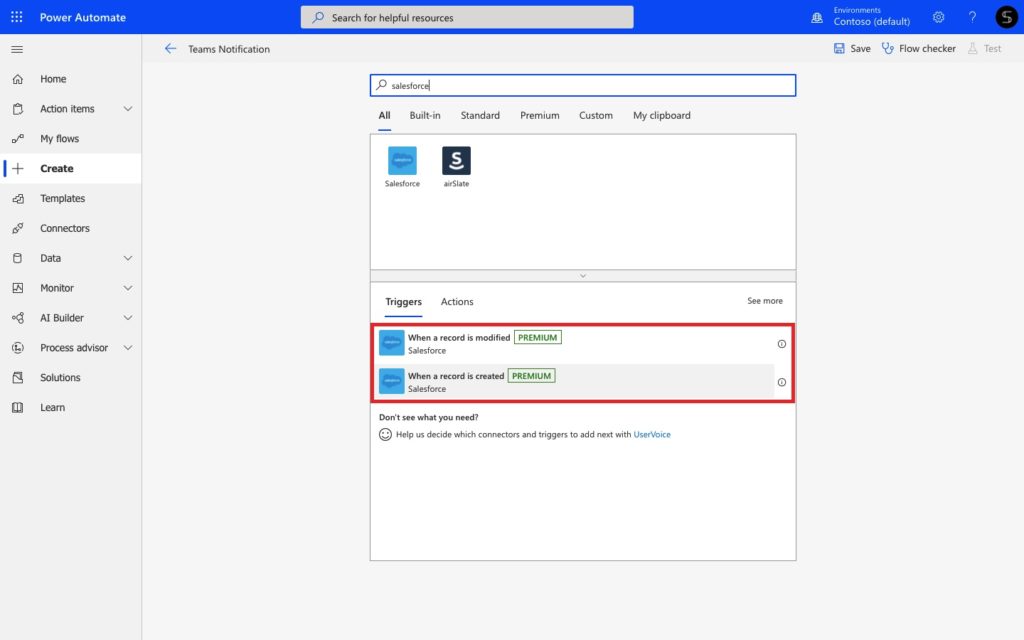In today’s collaborative way of working, no sales manager or an account executive closes a big deal solo. The entire sales team collaborates with colleagues from marketing, product development, financial and legal departments that are growing business and building relationships with customers. Therefore, companies develop a new way of working by integrating additional tools and software to streamline processes and align colleagues even if they work in different business units or remotely. This article describes how to improve your sales collaboration in Microsoft Teams and Salesforce by building automated flows in Power Automate.
Why do you need to build flows in Power Automate?
1. Improve collaboration on sales deals
The importance of sales collaboration cannot be overemphasized. Your salespeople work closely with their sales team and colleagues from other departments, sales experts, external agents, and others. And of course, they use many different tools and software. So how do you prevent loss of information, misunderstanding, and time loss? This is where Power Automate can help you. Connect dozens of applications, build automation between them, and create an ideal collaborative workspace.
2. Streamline your sales process
How much time do you spend on performing manual tasks? Or how many pieces of key information are lost into the overage information flow? Indeed, Power Automate is an ideal platform that allows users to build automation flows with a no-code solution. By building automation, you can perform any use case to simplify and optimize your sales processes. From managing notifications and approval processes to building automation between any Microsoft and 3rd party app.
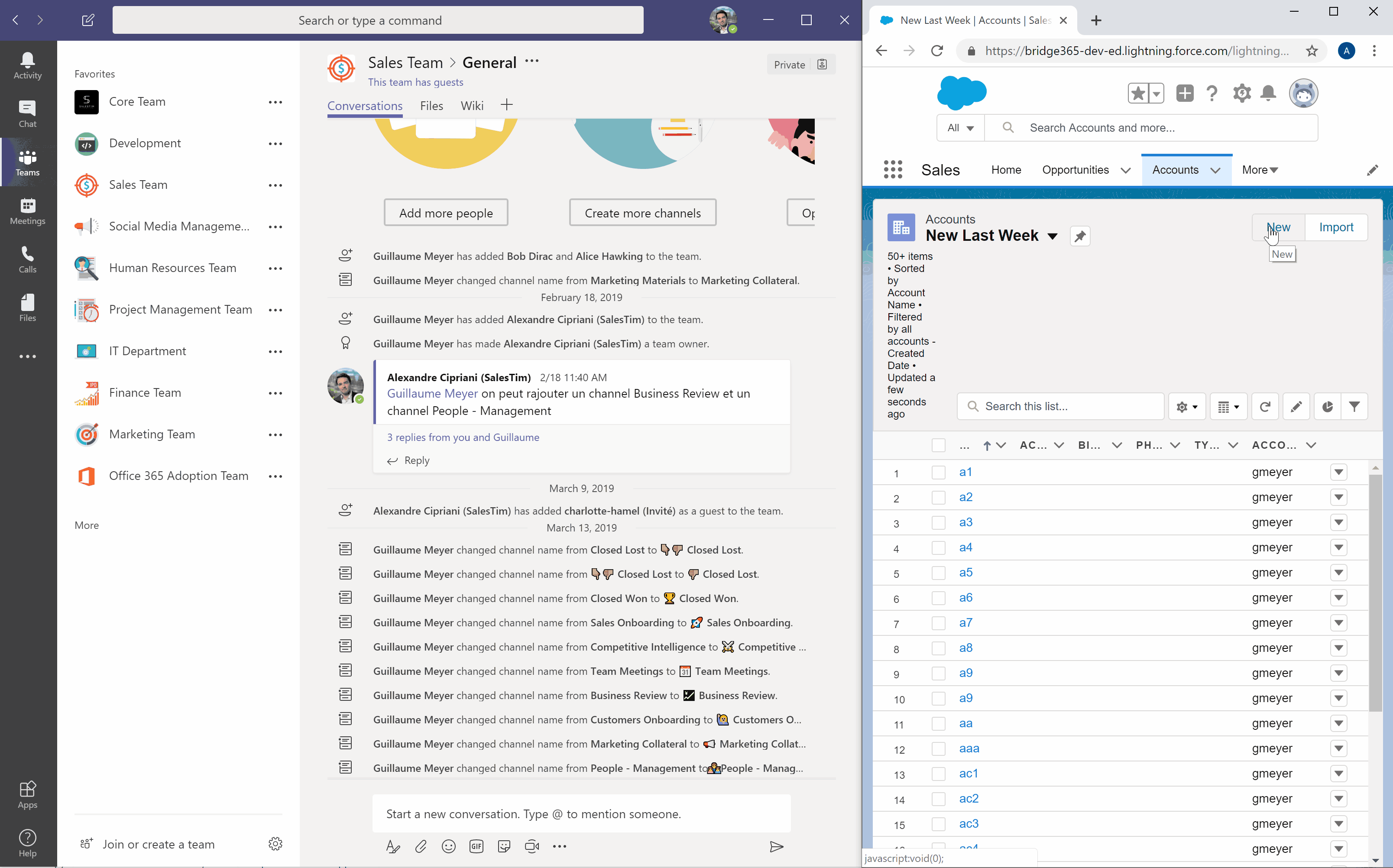
3. Scale automation across the entire organization
When automation is built for one process, it is so easy to scale it across your entire organization. It is especially important for large companies. Connect workers from different departments and offices and build a model for each sales process safely and efficiently.
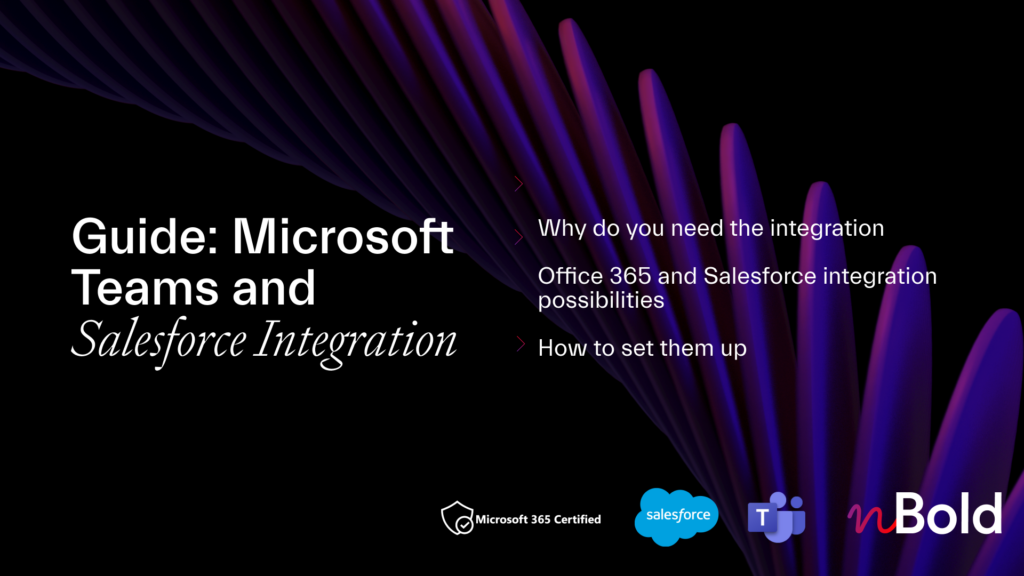
Guide: Microsoft Teams and Salesforce Integration
- Why you should integrate Salesforce with Teams
- All integration possibilities
- Most demanded use cases
- How to set up the integrations
Power Automate for Salesforce and Microsoft Teams – Basic Flows
Now, let’s discuss some basic sales scenarios you may experience. And then, we will build an automated flow in Power Automate to optimize the sales process and simplify your work routine.
Receive Microsoft Teams notifications about important events in Salesforce
1. Notify a team when a new deal is created in Salesforce
Suppose your sales managers work on key prospects in Salesforce. There, they add a new Account or Opportunity record with all essential information, such as name, location, revenue, and contact information. At the same time, your sales reps should collaborate with colleagues from marketing, product development, customer support, financial, and other departments to close a deal. And these colleagues even don’t have a Salesforce license, and they share all content via a dedicated team in Microsoft Teams. So how to align your team and successfully close sales deals?
First, you can set up a simple Teams notification when something happens in Salesforce. To do this, find a Salesforce trigger in Power Automate “when a new record is created.”
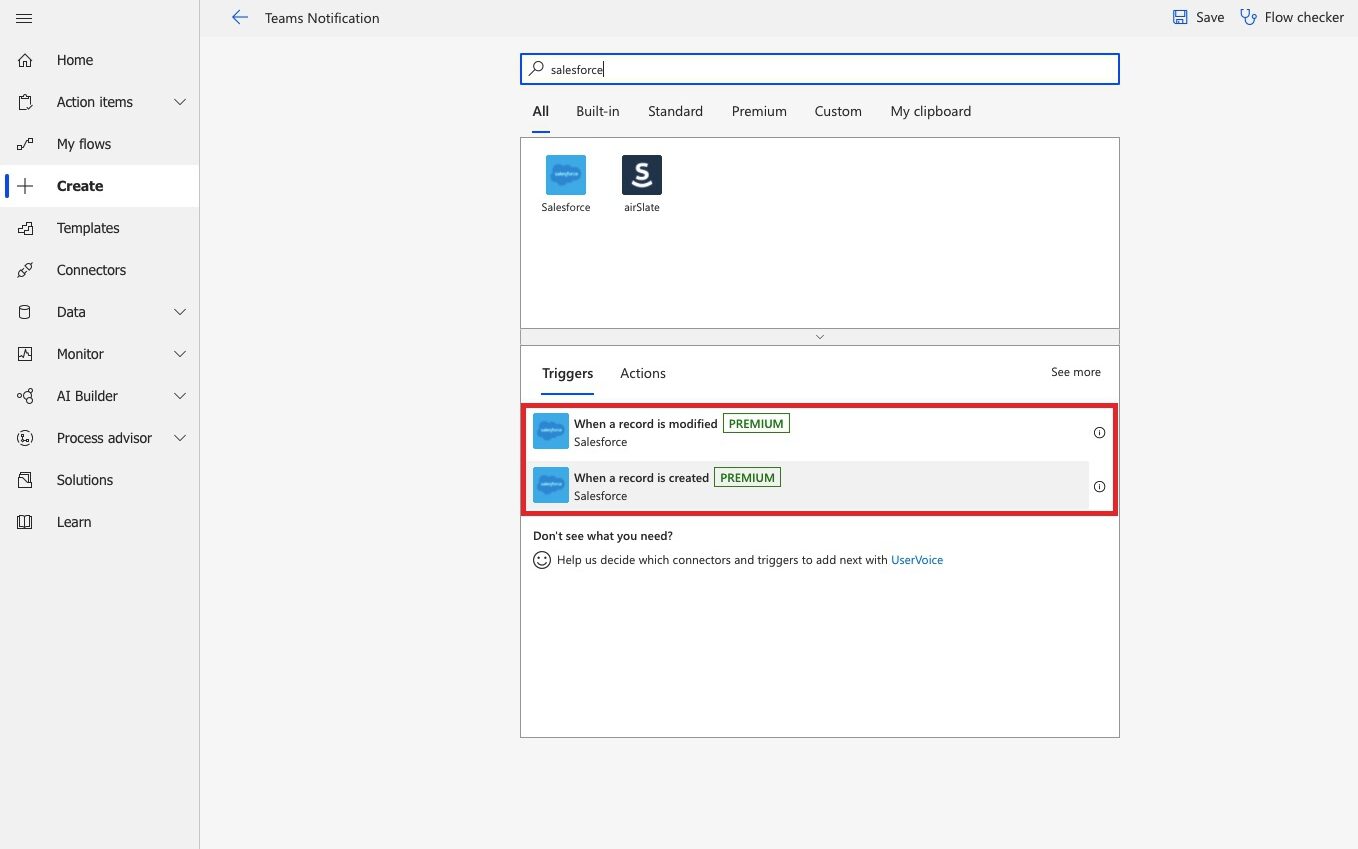
Then, find Microsoft Teams connector and choose an action “post a message”. Here, you can choose the required team and channel. Moreover, you can customize a message using dynamic content from Salesforce, such as record name, contact information, amount, close date, stage, and other details.
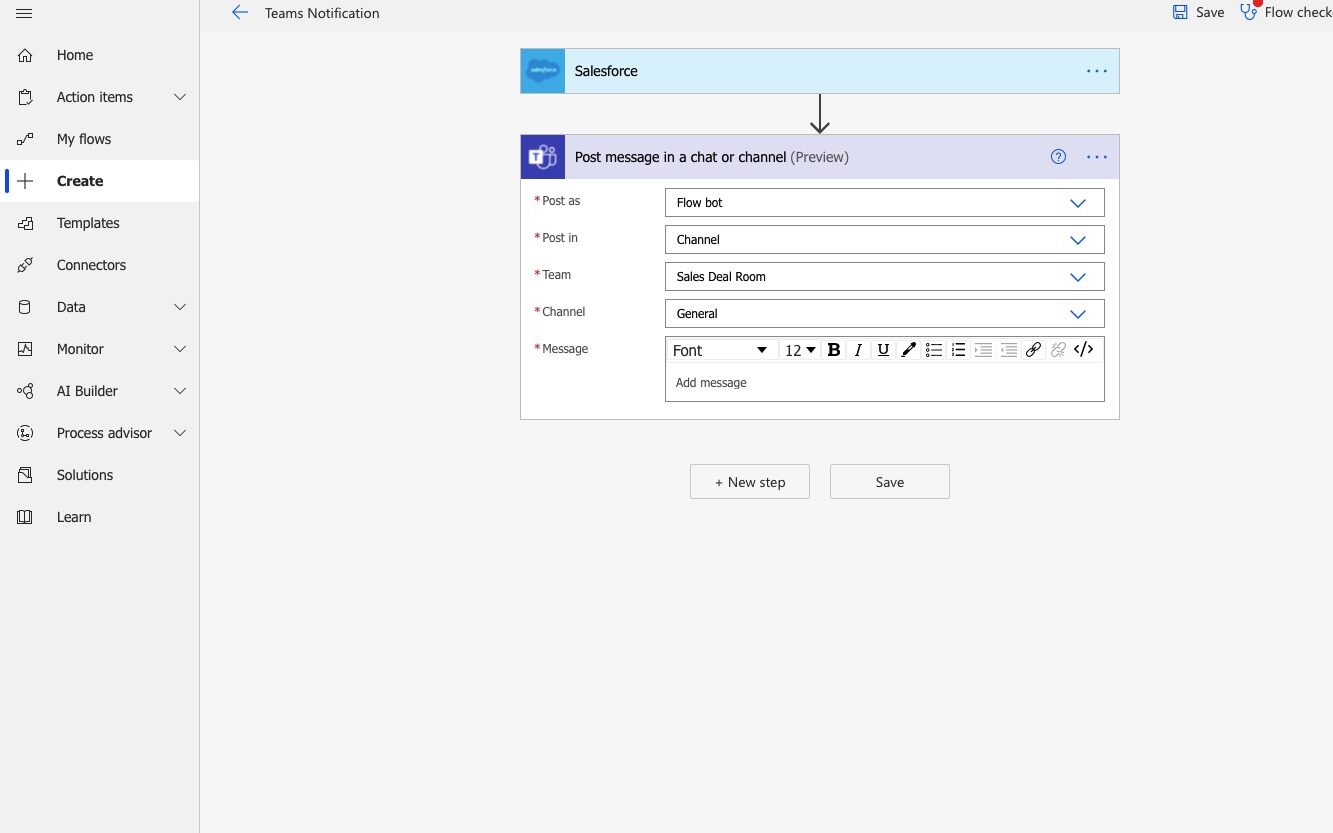
It’s done! With this easy-built flow, your team members will be notified when a new record is created in Salesforce. And they can quickly start working on closing a deal without wasting time and losing information.
Collaborate on Salesforce deals in Microsoft Teams
2. Set up weekly and daily sum-ups to stay up to date on sales updates
We may understand how many pieces of information your teammates share during their workday. So how not miss important updates related to your key prospects and customers? Here, at nBold we have a weekly online meeting with our team during which we discuss the latest updates, customers news, and upcoming events and KPIs. But we also have weekly Teams posts where all important updates and news are presented in a very structured way. Therefore, I highly recommend you build a simple Power Automate flow to automatically post a Teams message where your teammates will see all sales updates.
Any user in your Office 365 environment will receive a weekly email with a summary of new Salesforce opportunities with this template. Thus, you can choose your teammates in Microsoft Teams and build a flow for them.
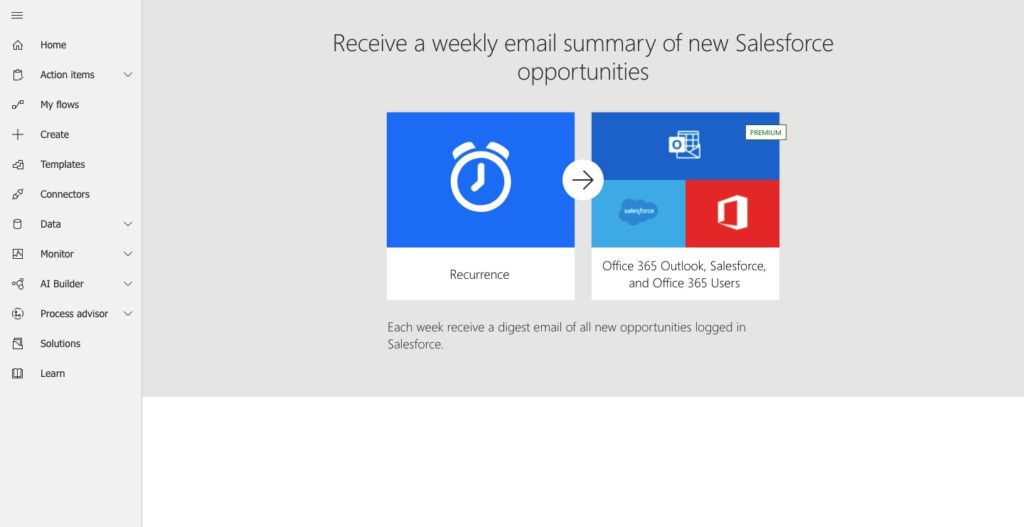
Manage Salesforce and Microsoft app integrations
1. Task management in Teams for each new Salesforce record
Now, let’s say your sales team in Microsoft Teams uses Microsoft Planner to manage their sales activities. So how to quickly set up a new task when a new record is created in Salesforce? To do this automatically, build a Power Automate flow connecting Planner in Teams and Salesforce.
Choose the Salesforce trigger “When a new record is created” and set up any custom object.
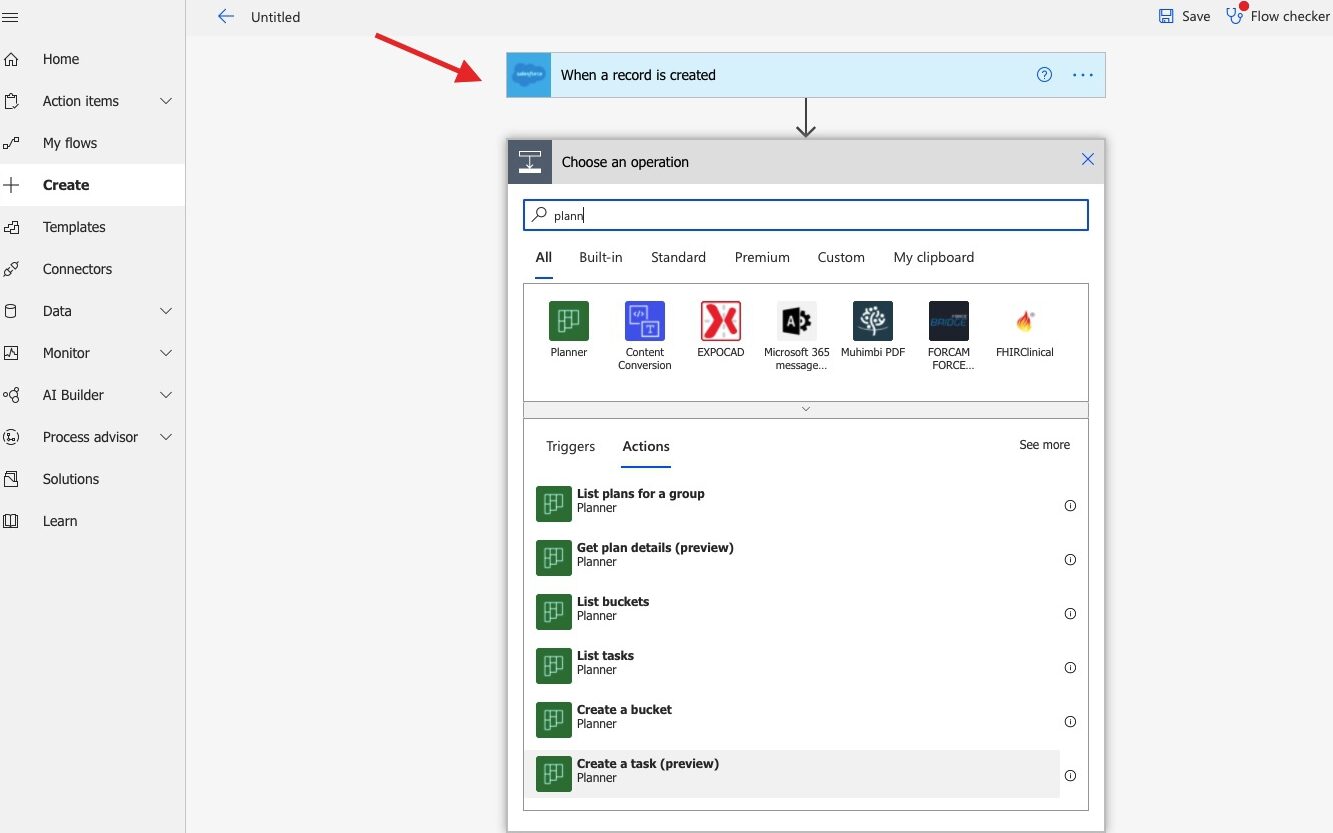
Then, find the Microsoft Planner connector and choose the action “Create a task”. Here you can define in which team and Planner you will post a new task. Moreover, add dynamic content from Salesforce to detail a task. And add other information, from deadlines to assigned person, label, and priority.
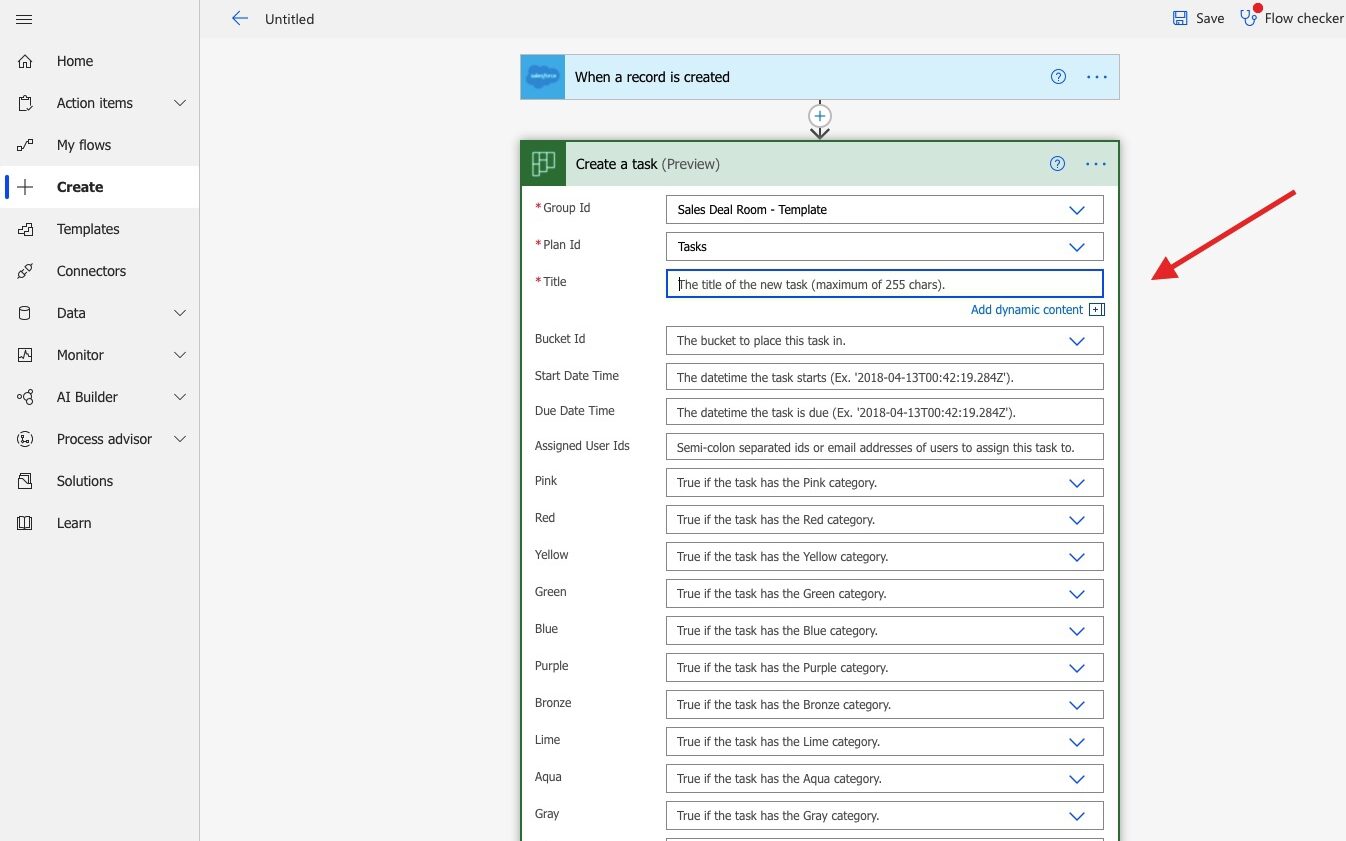
With this flow, your teammates will receive tasks in Planner each time when a new record is created. For example, a marketing manager will receive a task to create a playbook for a new Opportunity. At the same time, a sales rep will start to prepare a demo presentation, and so on.
2. Manage your sales team’s agenda according to Salesforce events
In today’s hybrid way of working, sales reps’ agenda can be full of virtual meetings and demo presentations with prospects and customers. So how to effectively manage your sales team’s agenda? By using Power Automate, you can build a flow to connect Salesforce events and your Microsoft Calendar.
Define the right Salesforce Object and find a Microsoft Calendar connector. Choose an action “create an event” and set up all details using dynamic content from Salesforce.
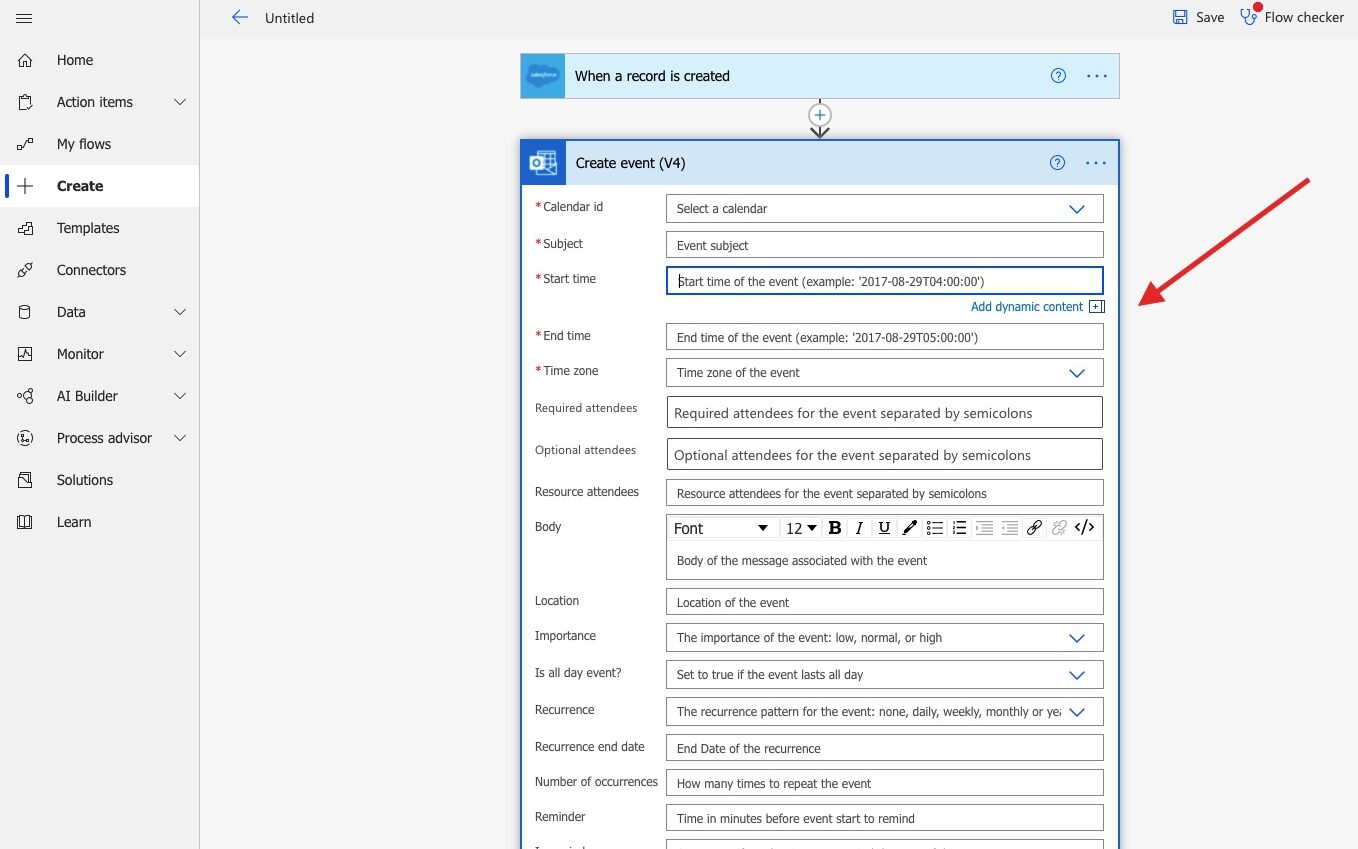
With this simple flow, you will copy Salesforce events right to Microsoft Calendar. As a result, your teammates will receive Teams and Outlook notifications about the new upcoming event. Whit this flow your colleagues from the Product Development department will be prepared for the upcoming demo presentation. Another scenario is to set up a meeting for all sales teams to discuss a sales strategy for a new key Prospect created in Salesforce.
Automate team creation with Power Automate and Salesforce
Now, let’s discuss how you can optimize and streamline your sales process. With Power Automate you can automatically create records in Salesforce when something happens in your Teams environment. Sounds great? Then try to build the following flows to avoid manual tasks and stay focused on more important goals.
1. Create Salesforce leads from Excel Tab in Teams
Suppose you have an Excel spreadsheet where your marketing managers add new leads generated from the website chatbot. And they are working on documents in real-time right in Microsoft Teams.
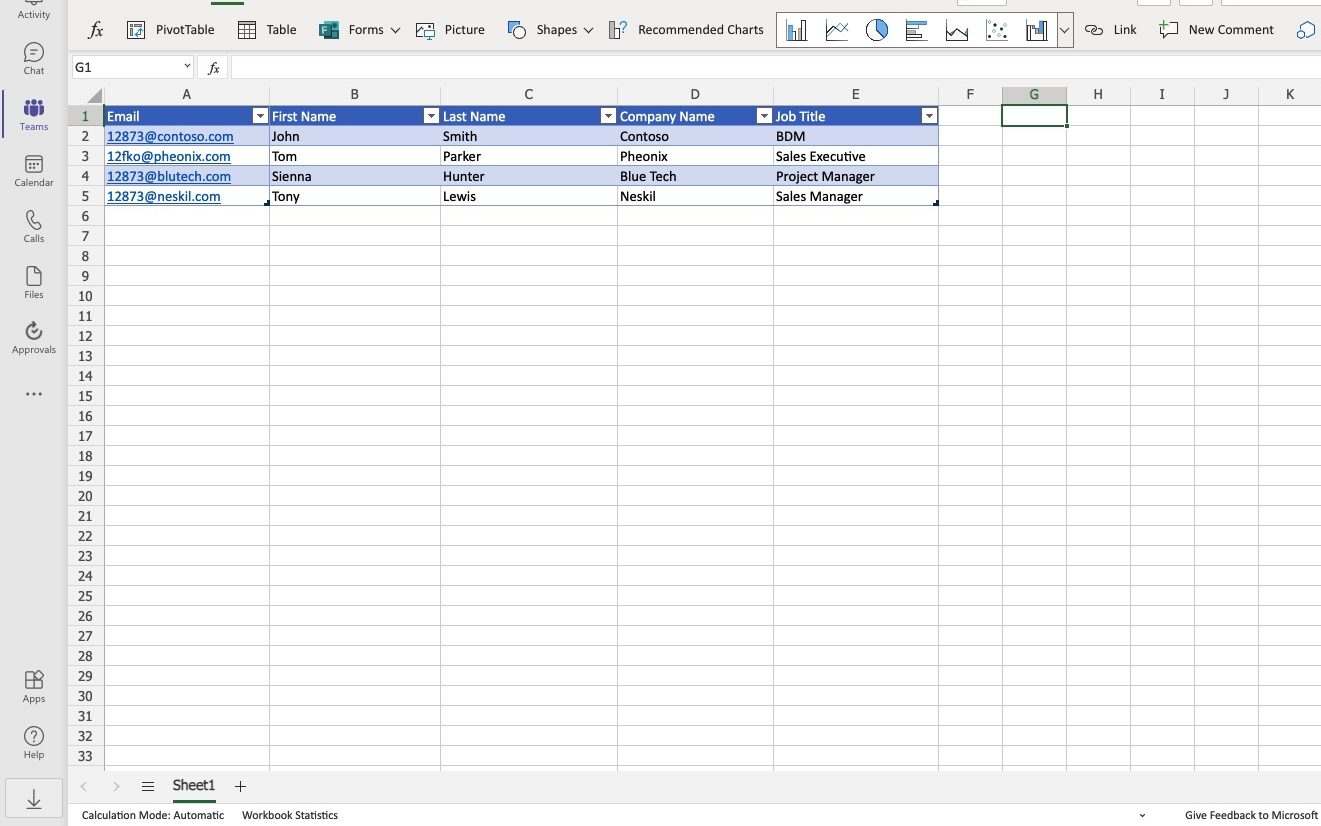
So how to align information from Microsoft Teams and customers database in Salesforce? By using this template whenever your marketing team adds a new row into the selected Excel Table, a new lead will be created in Salesforce.
2. Create a Salesforce record from Microsoft Forms in Teams
Imagine another scenario. Your colleague from the product development department has participated in an offline forum. There, they met people who may be your partners in the future. So how to add their contact information into the Salesforce database, if your colleague does not have a Salesforce license?
First of all, add Microsoft Form as a new Tab in Microsoft Teams where your sales reps can add all key information for future contact in Salesforce. Add their Name and Last Name, phone number, emails, and other information.
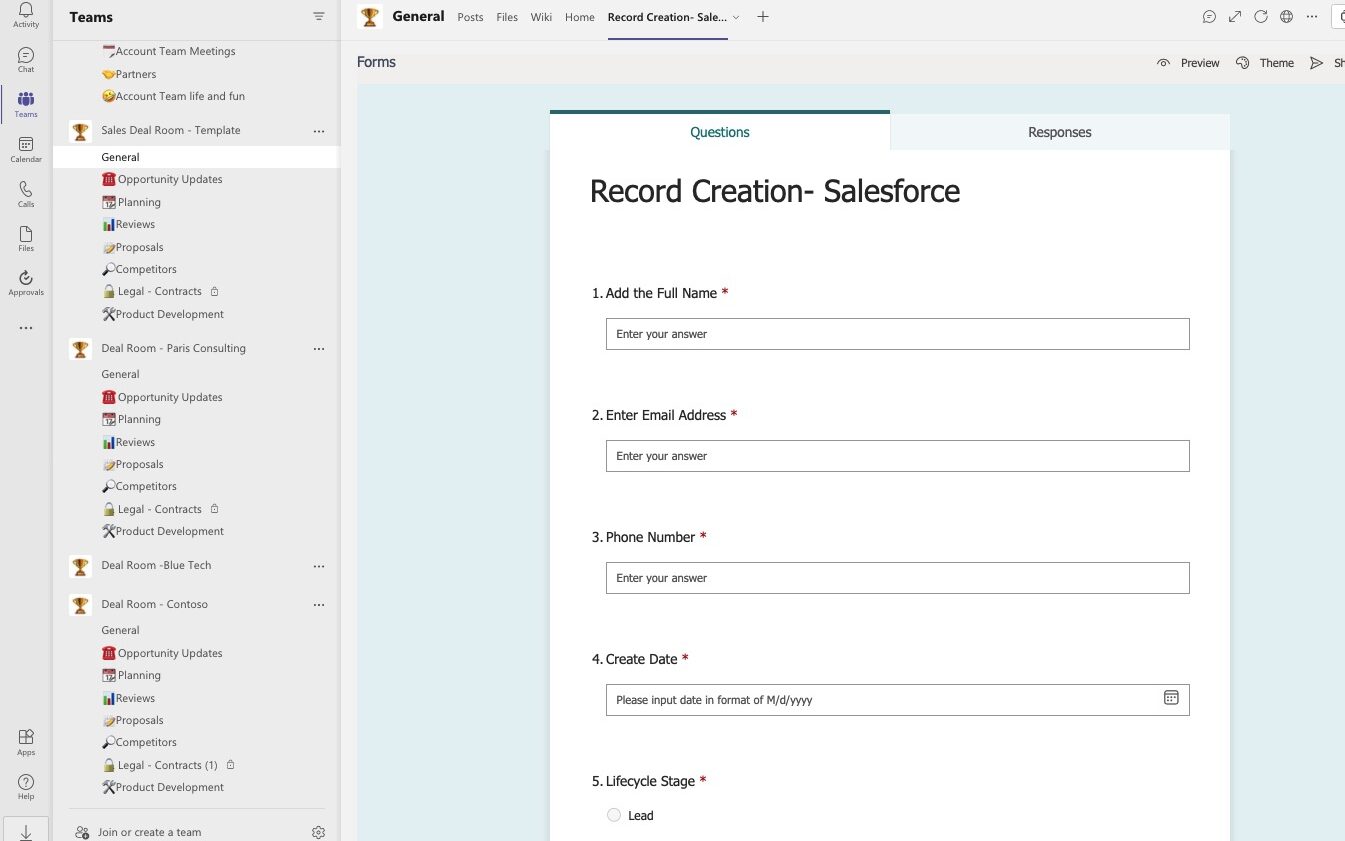
And using this template, you can build automation to get newly created Contact in Salesforce when someone submitted a form in Microsoft Teams. Moreover, you can set up the additional approval process by using the Approval App to make sure only needed contacts are included in your Salesforce database.
Connect Salesforce to Microsoft Teams with Collaboration Templates
Finally, with advanced Salesforce and Teams integration, you can improve your sales collaboration at scale. Want to know how to create teams from a template for each new Opportunity or Account in Salesforce? Then stay with us and we will tell you how it works.
Previously, we discussed how to connect your Salesforce environment with a team in your Microsoft Teams. But how to create this team? How to build an effective workspace with all channels, tabs with apps, members’ permission, and so on?
What if we tell you that it is possible to create a team from the pre-built template with standard and private channels, tabs with apps, cloned files, and folders? And what if we say that you will get this team automatically for each new Salesforce Opportunity and Accounts? Sounds great, doesn’t it? Then let’s go through the key features you will get by connecting Salesforce with Microsoft Teams templates.
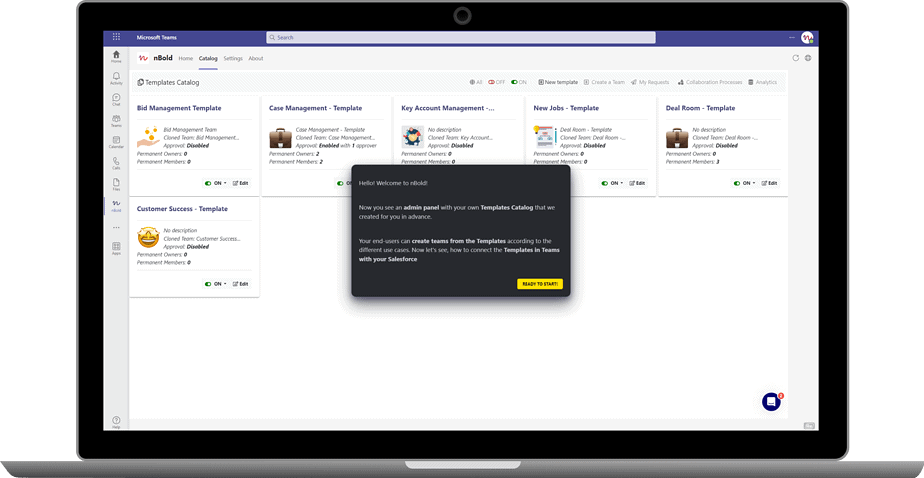
Take a tour of nBold and see first hand how to create pre-built teams from Salesforce records using our solution.
1. Get teams from the template for each new Salesforce Opportunity and Account
Imagine, your sales rep has just added a new Account in Salesforce. This is your key prospect and to close a deal you need to quickly create a team with colleagues from marketing, product development, customer support, and other departments. They do not have a Salesforce license and they share all content in Teams using additional apps, such as SharePoint, Planner, Yammer, and so on.
With Salesforce and Teams templates integration, you will automatically create a team from the Sales Deal Room or Key Account Management template.
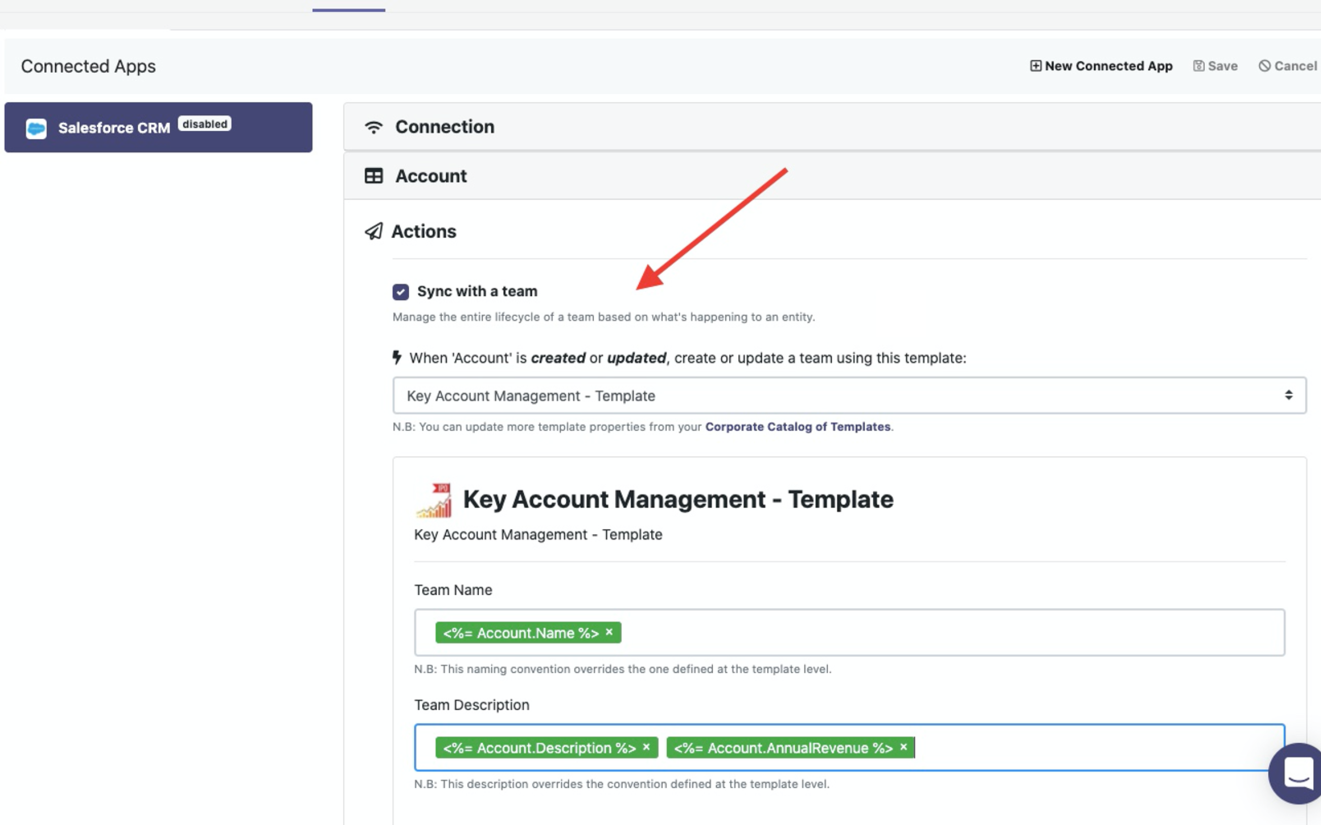
These teams will contain private and standard channels, cloned sales templates and guidelines, tab with Planner and upcoming sales tasks, and all required settings and members’ permissions. In other words, an ideal workspace where your colleagues will start to work on a deal immediately. This is an amazing option, especially when you work in a large organization. By creating separate collaboration silos you will make sure your team is working together in a very structured and efficient way.

2. Create a channel
No need to create an entire team for each new Opportunity or Account in Salesforce? Alright, you can get a new channel into the needed team. With this option, you will have separate channels for each prospect where your teammates can share updates, perform sales tasks and work on documents in real-time. Thus, you will avoid a mess in documents and loss of key information.
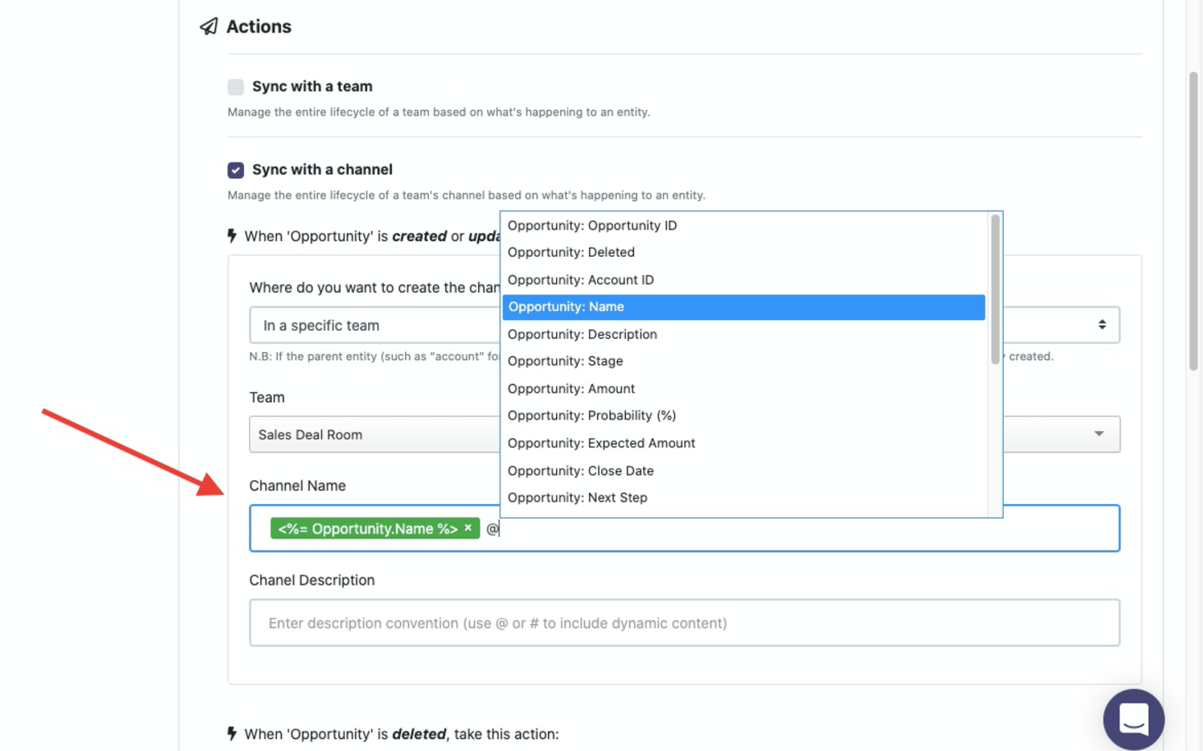
Moreover, you can create a new Opportunity channel into the parent Account team related to Salesforce data.
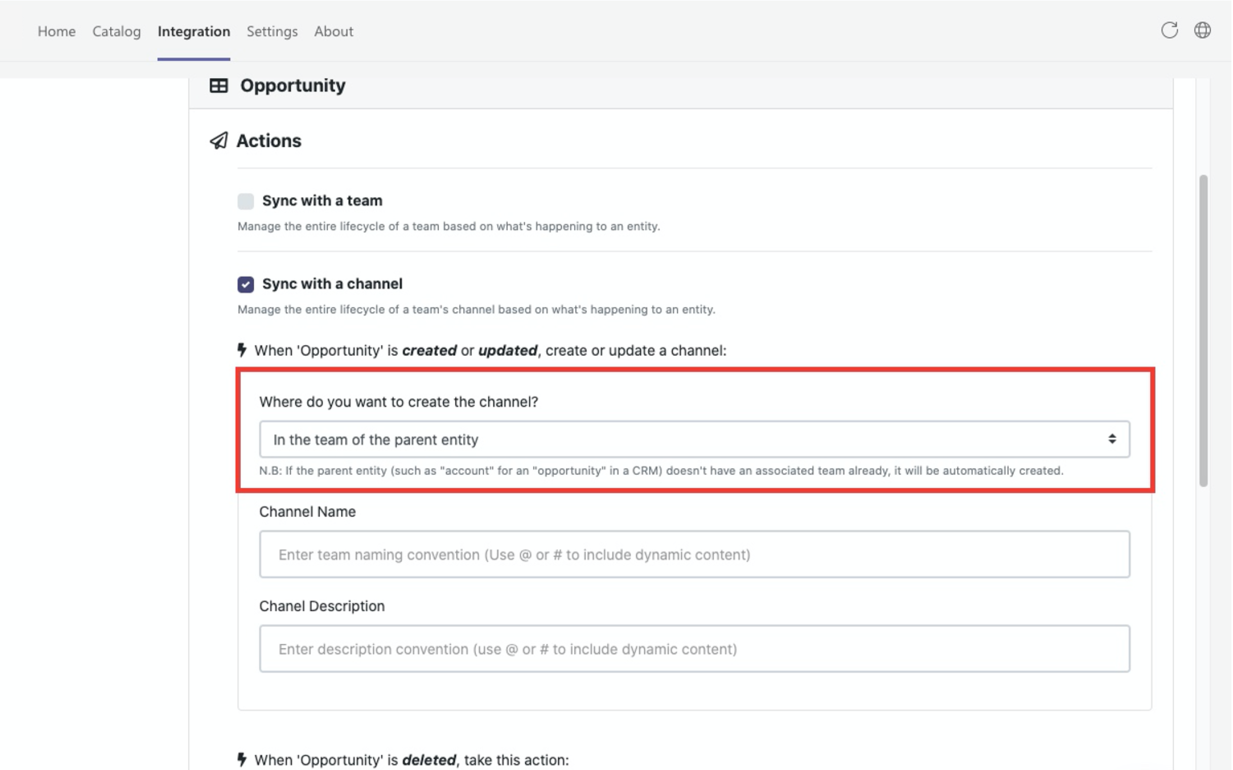
3. Delete or archive teams
Wondering how to reduce the number of unused teams? You can choose what to do with created teams for Accounts and Opportunities when records are deleted in Microsoft Teams. You can automatically delete or archive teams and easily avoid a mess in Microsoft Teams.
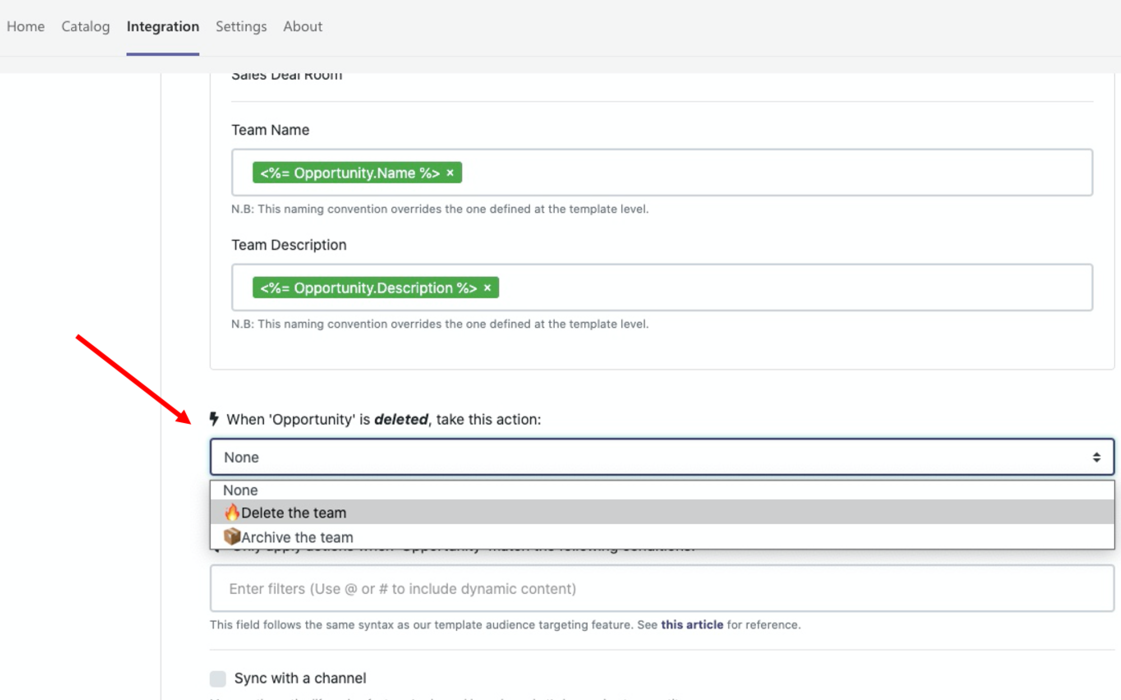
4. Set up a naming convention
Finally, you can manage naming conventions to get teams and channels created with the right name. With dynamic content from Salesforce, you can perform any use case and give the name to the newly created workspaces that contain Record’s name, expected revenue, close date, owner information, etc.
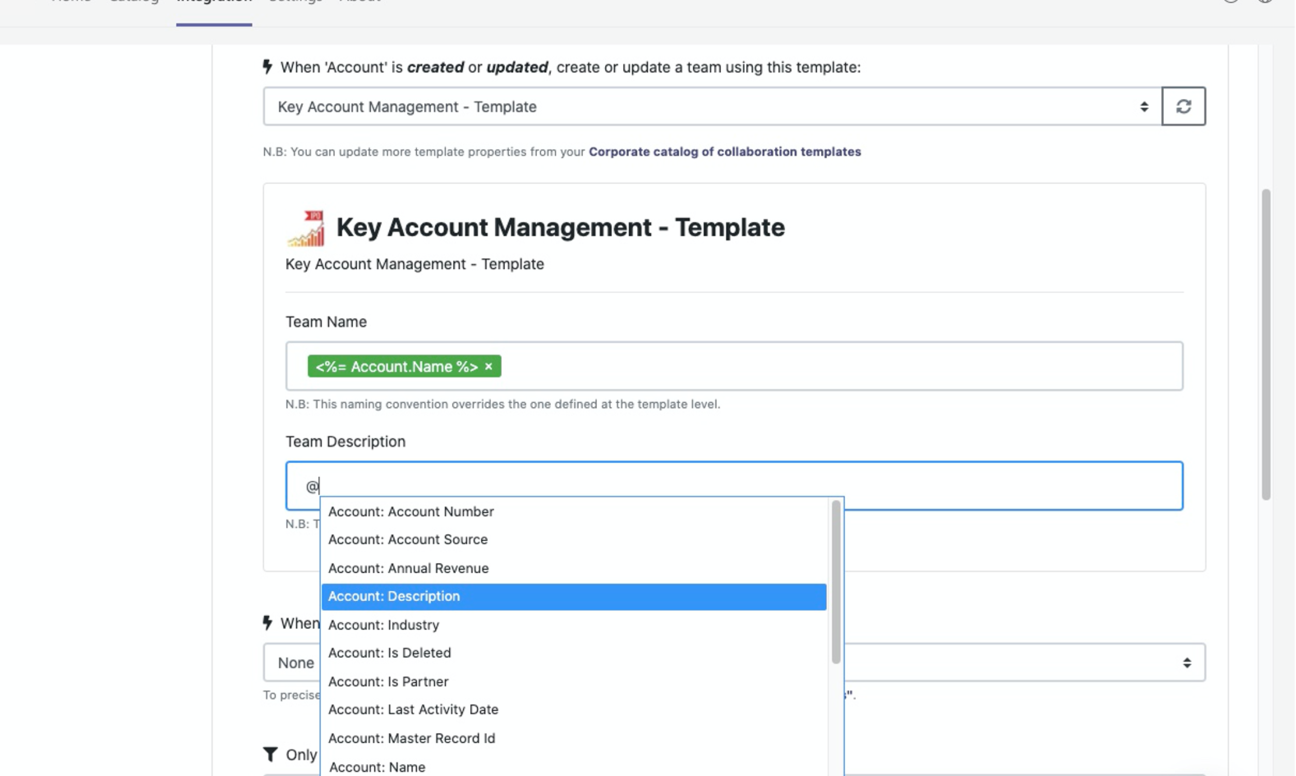
With these features, your colleagues in Microsoft Teams will see the purpose of a team or a channel. Moreover, with these simple automated rules, you can avoid team duplication and restrict users from creation unused collaboration silos.
Book some time with us to explore how nBold can fit your organizational needs.
